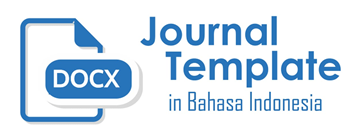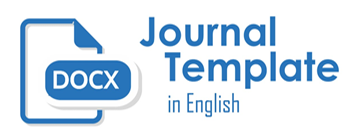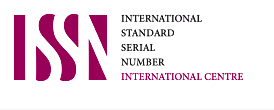Online Submissions
Already have a Username/Password for Biopsikososial: Jurnal Ilmiah Psikologi Fakultas Psikologi Universitas Mercubuana Jakarta?
Go to Login
Need a Username/Password?
Go to Registration
Registration and login are required to submit items online and to check the status of current submissions.
Author Guidelines
JBUMB is published twice a year (April and October). Submissions are accepted at any time. The review process (double-blind peer review) is targeted to be accomplished within 3 months since submission.
All submissions are evaluated by the Editorial Board in terms of scientific contributions, readability, and appropriateness to the focus and scope. See the peer review section for more detailed information. Submissions that do not adhere to the guideline may be returned to authors immediately or may be rejected.
Please note that submissions are subject to plagiarism screening and please consider learning the JBUM Publication Ethics.
Please submit your manuscript electronically through the manuscript submission portal in Microsoft Word format. You will need to register a new account (if you do not have one) to make a submission. Do not submit manuscripts to the editor's email address ([email protected] or [email protected]).
General Guideline
- The submitted manuscript must adhere to the guidelines of the 7th Publication Manual of the American Psychological Association.
- The submitted manuscript must reflect original work and is free from plagiarism. The editorial board reserves the right to automatically reject the submission should plagiarism be detected.
- Manuscript in either English or Indonesian language is accepted, however, a manuscript written in English by non-English native authors must be edited by a professional English editor prior to sending for review.
- For manuscripts were written in the Indonesian language, an appropriate translation of the terminologies and variables must be performed whenever possible based on the reference from the latest version of Kamus Besar Bahasa Indonesia.
- Please download the template of the manuscript (Indonesia/English) and title page (Title page) prior to submitting your manuscript. You can modify the manuscript sections to suit your submission type (original research, literature review, brief report, or commentary paper). Please ensure the manuscript adheres to the appropriate guideline to speed up the reviewing process. All files should be submitted in MS Word format; do not submit files in PDF format.
- The submitted manuscript must include an “Impact and Implication in the Psychology Context” section in the main text, where authors elaborate on the impact of their findings and arguments within the psychology perspective. The maximum length for this section is 100 words.
- The journal applies strict criteria regarding the maximum word counts and only under very rare circumstances are manuscripts exceeding the above word limits accepted. The maximum word length for each type of manuscript is:
Original research – 6,000 words, including bi-lingual abstract (of maximum 150 words for each language), main text, references, tables, and figures.
Literature Review – 6,000 words, including bi-lingual abstract (of maximum 150 words for each language), main text, references, tables, and figures.
Brief report – 3,000 words, including bi-lingual abstract (of maximum 100 words for each language), main text, tables, figures, and a maximum of 8 references.
Commentary paper – 3,000 words, including bi-lingual abstract (of maximum 100 words for each language), main text, tables, figures, and a maximum of 8 references.
- Tables and figures are presented to enhance clarity and are not redundantly explained in the paragraphs. Figures are presented in black-and-white, high-resolution images.
- Authors are encouraged to use referencing manager tools (e.g. EndNote, Mendeley).
- The ethical statement has been provided and written properly as guided in the Title Page template.
- To enable a double-blind review procedure, the title page must be uploaded separately. The manuscript must not contain any author-identifying information. Below are the required files for the submission.
- Cover letter.
- The title page, includes the title, list of author's names and affiliations, correspondence email, acknowledgment, funding, and conflict of interest. Download the template for The title page here (Title page).
- The Main manuscript MUST NOT include any information about authors and affiliations, including acknowledgment, funding, and conflict of interest sections. Download template for the manuscript here (Indonesia/English).
- Other supporting files (if any).
Title Page
A separate title page must be prepared and submitted along with the manuscript. The title page consists of the following information: Title of the manuscript (no more than 14 words), authors' names and affiliations, and a corresponding email. The information about ethical statements, conflicts of interest, and/or sponsoring bodies should also be written on the title page. Please use our template (Title page) for the title page. The title page is submitted as a TITLE PAGE in the submission portal.
Manuscript Structures
The manuscript is systematically and narratively written in paragraphs. A brief report and commentary papers do not typically have standardized sections.
General structures of the manuscript include:
- TITLE OF THE MANUSCRIPT. The title must be concise (no more than 14 words), must reflect the main findings, and is clearly and creatively articulated.
- ABSTRACT. Regardless of the language used in the manuscript, an unstructured abstract must be provided in both English and Indonesian language.
- KEYWORDS. Three to five keywords must be provided and must reflect the study's focuses or variables (presented in alphabetical order).
- IMPACT AND IMPLICATION IN THE PSYCHOLOGY CONTEXT. The section elaborates the implication of the study findings within the psychology perspective, within a maximum of 100 words.
- INTRODUCTION. The introduction contains a presentation of the phenomena as background information that leads to the research problems. Sufficient literature reviews are also presented in this section. Please use subheadings for better organization. Research questions, hypotheses, and study aims are clearly presented at the end of this section.
- METHODS. Methods should provide detailed information to enable replication of the study. Please refrain from presenting redundant information of the generally known terminologies (such as the definition of well-known study designs, sampling techniques, etc.). Subheadings of the Methods for the original research manuscript typically include:
o Participants: describe the criteria of participants, sampling techniques, and general characteristics.
o Design: describe the study designs and the rationale.
o Procedure: describe how the study was executed and ethics approval information.
o Instruments: describe the instruments used to collect the data.
o Analysis Strategies: describe the particular techniques that are used to analyze the main findings.
- RESULTS. Presentations of the results should answer the research questions and hypotheses written in the Introduction section. Tables and figures may be used when necessary for effective presentation of the findings, but should not be redundantly explained in the paragraphs. When the interview is used as a data collection method, this section should also contain direct quotations of meaningful participants’ transcripts that support the findings.
- DISCUSSION. Discussion elaborates the interpretations of the findings that are presented. Study limitations should also be adequately discussed in this section.
- CONCLUSION AND RECOMMENDATIONS. This section summarises the study findings and implications in both theoretical and practical contexts.
- REFERENCES. List all references used in alphabetical order, in accordance with the 7th APA style. Refer to the examples below.
Examples of references:
Journal article | Gabriel, B., Beach, S. R. H., & Bodenmann, G. (2010). Depression, marital satisfaction and communication in couples: Investigating gender differences. Behavior Therapy, 41, 306-316. https://doi.org/10.1016/j.beth.2009.09.001 |
Journal article (in press) | Baldwin, M., & Keefer, L. A. (in press). Being here and now: The benefits of belonging in space and time. Journal of Happiness Studies. https://doi.org/10.1007/s10902-019-00214-7 |
Journal article (early view/advance online publication) | Allan, H. (2010). The perils facing nurse education: A call for leadership for learning. Nurse Education Today. Advance online publication. https://doi.org/10.1016/j.nedt.2010.01.002 |
Journal article (electronic) | de Boer, M. J., Steinhagen, H. E., Versteegen, G. J., Struys, M. M. R. F., & Sanderman, R. (2014). Mindfulness, acceptance, and catastrophizing in chronic pain. PloS One, 9(1), Article e87445. https://doi.org/10.1371/journal.pone.0087445 |
Thesis (from website) | Axford, J.C. (2007). What constitutes success in Pacific Island community conserved areas? [Doctoral Dissertation, University of Queensland]. UQ eSpace. http://espace.library.uq.edu.au/view/UQ:158747 |
Thesis (from database) | Leigh, J. (2010). Self-determined mindfulness and attachment style in college students (Publication No. 305210119) [Doctoral Dissertation, Indiana State University]. ProQuest Dissertations and Theses Global. |
Book | Azwar, S. (2012). Penyusunan Skala Psikologi Edisi 2. Pustaka Pelajar. |
Data from the Internet | Dinas Pendidikan Tinggi Republik Indonesia. (2015, December 10). Grafik jumlah mahasiswa aktif* berdasarkan jenis kelamin. http://forlap.dikti.go.id/mahasiswa/homegraphjk |
Newspaper/magazine | Chamberlin, J., Novotney, A., Packard, E., & Price, M. (2008, May). Enhancing worker well-being: Occupational health psychologists convene to share their research on work, stress, and health. Monitor on Psychology, 39(5), 26-29. |
Newspaper/magazine (online) | Fachrudin, F. (2016, September 8). Ketentuan soal perzinahan dalam KUHP dinilai perlu diperluas. Kompas. http://nasional.kompas.com/read/2016/09/08/18302141/ ketentuan.soal.perzinahan.dalam.kuhp.dinilai.perlu.diperluas |
Newspaper/magazine (no author) | Usaha macet, ditipu paranormal miliaran rupiah. (2008, Oktober 5). Kompas Online. http://www.kompas.com/read/xml/2008/10/08/16213644/usaha.macet. kena.tipu.paranormal.miliaran. |
Book chapter | Diener, E., Lucas, R.E., & Oishi, S. (2002). Subjective well-being: The science of happiness and life satisfaction. Dalam Synder, C.R. & Lopez, S.J. (ed.) Handbook of Positive Psychology (pp. 139-170). Oxford University Press. https://doi.org/10.1016/j.ahgj.123.456.89 |
Manuscript submitted for publication | Himawan, K. K. (2017). I Need Thee Every Hour: Religiosity and Well-Being of Single Adults. Manuscript submitted for publication. |
Submission Preparation Checklist
As part of the submission process, authors are required to check off their submission's compliance with all of the following items, and submissions may be returned to authors that do not adhere to these guidelines.
- The submission has not been previously published, nor is it before another journal for consideration (or an explanation has been provided in Comments to the Editor).
- The submission file is in OpenOffice, Microsoft Word, RTF, or WordPerfect document file format.
- Where available, URLs for the references have been provided.
- The text is single-spaced; uses a 12-point font; employs italics, rather than underlining (except with URL addresses); and all illustrations, figures, and tables are placed within the text at the appropriate points, rather than at the end.
- The text adheres to the stylistic and bibliographic requirements outlined in the Author Guidelines, which is found in About the Journal.
- If submitting to a peer-reviewed section of the journal, the instructions in Ensuring a Blind Review have been followed.
- Manuscript adheres to the 7th edition of APA referencing style and is managed with referencing manager tool.
- All material in the manuscript has been properly cited, is free of plagiarism, and the production right for the copyrighted material has been obtained.
- There is no author-identifying information in the manuscript.
- All authors are mentioned in the first submission in the appropriate order. Changes in authors' names/order are not usually allowed and are only permitted under specific consideration by the editor.
- A separate title page has been prepared, containing all authors' information, funding information, acknowledgment, and conflict of interest.
- The title of the article must be concise and straightforward (no more than 18 words) and intriguing (unlike the thesis formal title, "relationship between", etc.). The title must imply the psychological nature of the research and the research problems being tested.
Copyright Notice
1. The journal and respective authors hold exclusive copyrights of all materials published in Jurnal Biopsikososial: Jurnal Ilmiah Psikologi Fakultas Psikologi Universitas Mercubuana (JBUMB).
2. Any reproduction of any parts from the journal, without proper acknowledgment or prior permission, will result in an infringement of intellectual property laws.
3. JBUM is licensed under a Creative Commons Attribution-ShareAlike (CC BY-SA), which means that this journal has the rights to copy and redistribute its materials in any medium or format and adapt the materials for any purpose as long as it keeps the Author's name as the owner of Copyright.
4. Printed and electronically published manuscripts are open access for educational, research, and library purposes. The editorial board shall not be liable for violations of copyright law for other purposes.
Privacy Statement
The names and email addresses entered in this journal site will be used exclusively for the stated purposes of this journal and will not be made available for any other purpose or to any other party.


















